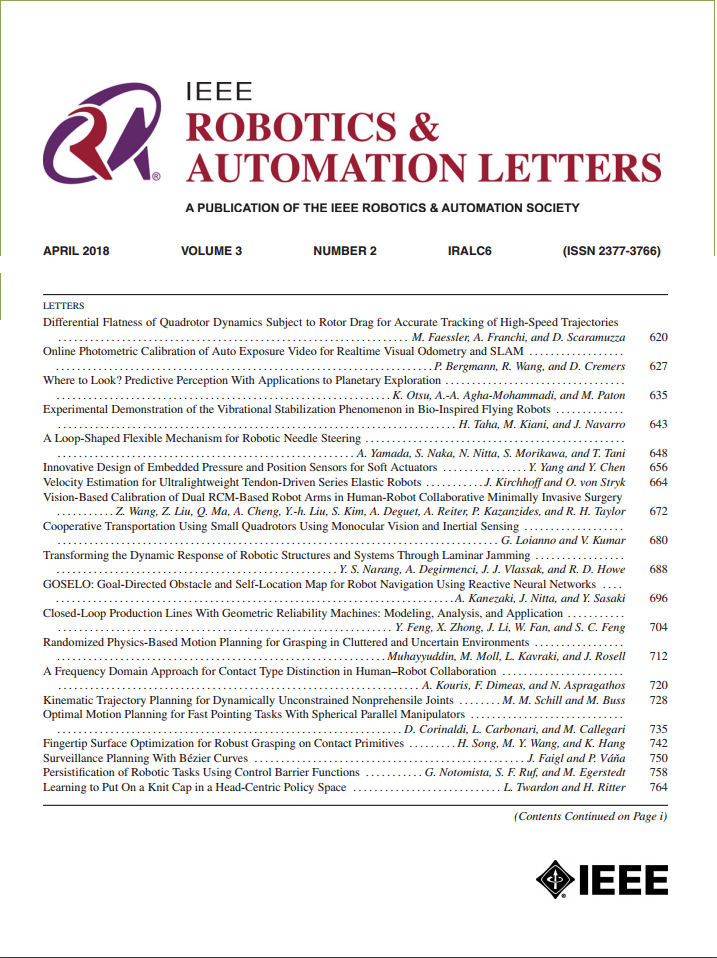A Coordinated and Resilient Formation Strategy Based on Hierarchical Reorganization
IF 5.3
2区 计算机科学
Q2 ROBOTICS
引用次数: 0
Abstract
Multi-leader formations offer superior flexibility and adaptability compared to single-leader configurations. However, the failure of even a single leader can pose significant risks to the overall success of hierarchical formations. Although existing strategies to address leader failures often rely on dynamic re-election mechanisms, these approaches are primarily tailored to single-leader configurations. To overcome these limitations, this paper presents a resilient formation strategy based on hierarchical reorganization. The central concept is to endow the formation with fail-tolerance through seamless leadership transitions while preserving overall agility. Specifically, we propose a comprehensive fail-tolerant leadership evaluation algorithm capable of selecting the most agile leadership configuration while maintaining formation safety. Recognizing that distributed evaluations may yield inconsistent leader selections, we integrate a Raft-based configuration consensus mechanism to achieve distributed agreement during hierarchical reorganization. Additionally, to guarantee the smooth execution of the reorganization process, a synchronous state updating strategy is adopted to mitigate communication delays, thereby facilitating seamless reconfiguration. We conducted extensive simulations and real-world experiments. Experiments results across multiple scenarios demonstrate that the proposed strategy swiftly identifies malfunctioning leaders, mitigates their adverse effects through hierarchical reorganization, and improves the mission success rate of a 7-UAV formation from 28.6% to 85.7%. Overall, our findings show that the proposed approach not only addresses individual agent failures but also significantly enhances the formation's stability and robustness.基于层次重组的协调弹性编队策略
与单先导结构相比,多先导结构具有更高的灵活性和适应性。然而,即使是一个领导者的失败也会对等级结构的整体成功构成重大风险。虽然解决领导者失败的现有策略通常依赖于动态的重新选举机制,但这些方法主要是针对单一领导者配置量身定制的。为了克服这些局限性,本文提出了一种基于分层重组的弹性队形策略。其核心概念是,在保持整体敏捷性的同时,通过无缝的领导过渡赋予组织容错能力。具体而言,我们提出了一种全面的容错领导力评估算法,该算法能够在保持编队安全的同时选择最敏捷的领导力配置。认识到分布式评估可能产生不一致的领导选择,我们集成了基于raft的配置共识机制,以在分层重组期间实现分布式协议。此外,为了保证重组过程的顺利执行,采用同步状态更新策略来减少通信延迟,从而实现无缝重构。我们进行了大量的模拟和真实世界的实验。多个场景下的实验结果表明,该策略能够快速识别故障领导者,通过层级重组减轻其不利影响,将7架无人机编队的任务成功率从28.6%提高到85.7%。总的来说,我们的研究结果表明,所提出的方法不仅解决了单个代理的故障,而且显著提高了地层的稳定性和鲁棒性。
本文章由计算机程序翻译,如有差异,请以英文原文为准。
求助全文
约1分钟内获得全文
求助全文
来源期刊

IEEE Robotics and Automation Letters
Computer Science-Computer Science Applications
CiteScore
9.60
自引率
15.40%
发文量
1428
期刊介绍:
The scope of this journal is to publish peer-reviewed articles that provide a timely and concise account of innovative research ideas and application results, reporting significant theoretical findings and application case studies in areas of robotics and automation.
 求助内容:
求助内容: 应助结果提醒方式:
应助结果提醒方式:


